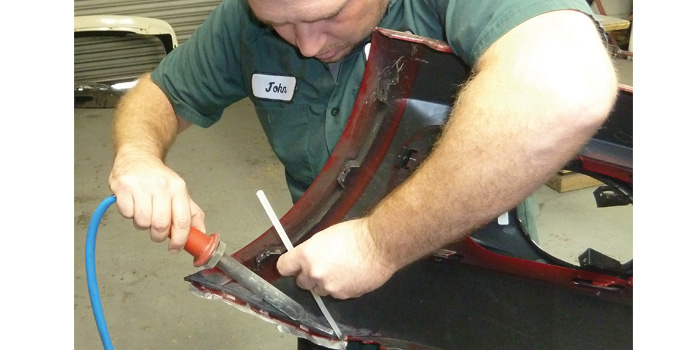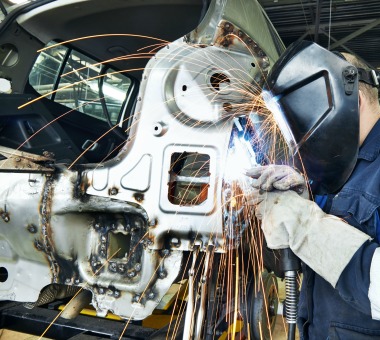Everything about Welding: Trick Insights Into Techniques and Finest Practices for Success
Welding includes a range of strategies, each suited for specific products and applications. Comprehending these methods, such as GMAW, SMAW, and TIG, is necessary for accomplishing perfect outcomes. Moreover, the best tools and security practices can not be forgotten. As preparation and repairing play important roles in the welding process, mastering these aspects can significantly boost the high quality of the last item. What are the crucial factors that ensure a successful weld?
Understanding Different Welding Methods
Welding techniques encompass a range of methods, each fit to specific applications and materials. Amongst the most usual methods are Gas Metal Arc Welding (GMAW), Shielded Steel Arc Welding (SMAW), and Tungsten Inert Gas Welding (TIG) GMAW, likewise understood as MIG welding, is popular for its speed and adaptability, making it perfect for slim materials. SMAW, or stick welding, is preferred for its simpleness and performance in exterior atmospheres, specifically with thicker metals. TIG welding offers precision and control, making it appropriate for elaborate work and non-ferrous metals (Fabrication). Each strategy has its unique advantages and considerations, allowing welders to choose the most effective approach based upon the task's needs, material type, and wanted end results. Comprehending these techniques is essential for effective welding
Crucial Welding Tools and Devices
While different welding methods need specific skills, the right tools and tools are just as essential for accomplishing high quality results. Essential welding equipment consists of welding devices, which vary depending on the technique-- such as MIG, TIG, or stick welding. Safety gear, including aprons, handwear covers, and headgears, assurances security and convenience during the process. In addition, clamps and fixtures assist safeguard products in place, guaranteeing precision in welds. Consumables like welding rods, wire, and shielding gas are additionally important components that affect the high quality of the weld. Devices such as mills and cutters help with surface area preparation and post-weld ending up, adding to a specialist end result. Spending in premium tools inevitably enhances the efficiency and efficiency of welding projects.
Security Practices in Welding
Appropriate safety techniques are essential in the welding sector to shield employees from potential threats. Welders need to use proper personal safety equipment (PPE), including headgears with proper shading, handwear covers, and flame-resistant apparel. Adequate ventilation is crucial to reduce direct exposure to harmful fumes and gases created during the welding process. In addition, workers must be educated in the correct handling of welding devices to stop crashes. Fire precaution, such as maintaining combustible materials far from the welding area and having fire extinguishers readily offered, are needed. Normal assessments of tools and offices can assist recognize potential hazards before they lead to crashes. By adhering to these safety practices, welders can produce a more secure working atmosphere and lessen threats connected with their trade.
Preparing Materials for Welding
Preparing materials for welding is a vital step that substantially affects the high quality and honesty of the last item (Montana Mobile Welding and Repair Belgrade). Proper preparation entails cleaning up the surface areas to remove contaminants such as oil, dust, and rust, which can endanger the weld. Techniques such as grinding, sanding, or making use of solvents are generally used to achieve a tidy surface. In addition, making sure that the materials mesh snugly is vital; gaps can lead to weak welds. It's additionally crucial to consider the placement and positioning of the parts, as this will influence the convenience of welding and the last end result. Finally, selecting the suitable filler product and guaranteeing compatibility with the base steels is crucial for achieving strong, sturdy welds
Tips for Getting High-Quality Welds
Attaining high-grade welds needs interest to information and adherence to ideal techniques throughout the welding process. Appropriate joint preparation is necessary, guaranteeing surfaces are cost-free and tidy from pollutants. Choosing the ideal filler material and welding strategy based on the base steels is critical for suitable bonding. Maintaining regular traveling speed and angle while welding can stop flaws and promote harmony. In addition, regulating warm input is vital; excessive warmth can cause warping and damaged joints. Regularly inspecting the welds throughout the process allows for prompt adjustments if necessary. Utilizing suitable post-weld therapies, such as cleansing and tension relief, can improve the sturdiness and honesty of the weld, ultimately ensuring a successful end result.
Troubleshooting Usual Welding Issues
Welding often provides obstacles that can affect the quality and stability of the end product. Common issues such as porosity, inconsistent weld beads, and overheating can emerge, each requiring particular repairing techniques. Comprehending these troubles is vital for welders to boost their skills and accomplish perfect results.
Porosity Problems Described
Porosity can often be overlooked, it stays an important problem in welding that can endanger the honesty of an ended up product. Porosity describes the visibility of tiny gas pockets within the weld bead, which can compromise the joint and lead to premature failure. This problem usually emerges from pollutants, wetness, or improper securing gas coverage throughout the welding process. To mitigate porosity, welders should verify that the base products are completely dry and clean, utilize suitable securing gases, and preserve regular welding parameters. Consistently checking the tools and setting can likewise aid determine prospective concerns prior to they manifest in the weld. Dealing with porosity properly is necessary for achieving solid, long lasting welds that meet top quality criteria.

Inconsistent Weld Beads
Inconsistent weld grains can greatly affect the top quality and stamina of an ended up item. Various elements add to this issue, including improper traveling speed, incorrect amperage settings, and irregular electrode angles. When the welder relocates as well quickly, a bead might appear slim and lack infiltration, while moving also slowly can trigger excessive accumulation. In addition, using the incorrect amperage can lead to either undercutting or too much spatter, both of which compromise weld honesty. The welder's technique, such as inconsistent lantern activity, can additionally result in irregular bead look. To reduce these troubles, welders should focus on maintaining stable, regulated motions and making certain correct equipment settings to achieve harmony in their welds. Uniformity is crucial to accomplishing solid and dependable welds.
Overheating and Bending Issues
Excessive warm during the welding process can cause considerable getting too hot and contorting issues, affecting the structural integrity of the work surface. These troubles usually manifest as distortion, which can compromise placement and fit-up, making more setting up testing. Factors adding to overheating consist of the choice of welding specifications, such as voltage and take a trip speed, as well as the sort of material being welded. To alleviate these concerns, welders ought to keep regular travel speed and proper warmth input while keeping track of the workpiece temperature. In addition, preheating or post-weld warmth therapy can assist alleviate stresses triggered by fast cooling - Montana Mobile Welding and Repair Belgrade Fabrication. Normal evaluation and adherence to finest methods are vital in avoiding getting too hot and ensuring the longevity and dependability of bonded structures
Regularly Asked Concerns
What Are the Profession Opportunities in the Welding Industry?
The welding industry offers varied job possibilities, including positions as welders, assessors, teachers, and engineers. Specialists can work in production, construction, aerospace, and auto sectors, profiting from solid need and affordable incomes in various duties.
How Can I Improve My Welding Speed Without Giving Up Top Quality?
To improve welding speed without compromising high quality, one need to exercise effective techniques, keep equipment, enhance setups, and improve hand-eye control. Normal training and looking for responses can additionally considerably add to accomplishing much faster, high-grade welds.
What Qualifications Are Available for Welders?
Various qualifications exist for welders, including those from the American Welding Culture (AWS), the National Center for Construction Education And Learning and Research Study (NCCER), and different industry-specific companies. These credentials improve employability and demonstrate ability proficiency.
Exactly How Does Welding Influence the Features of Metals?
Welding influences the homes of steels by modifying their microstructure, which can lead to modifications in solidity, ductility, and stamina. Heat input and cooling prices throughout the process considerably impact these material qualities.
Can I Weld Dissimilar Metals With Each Other?
